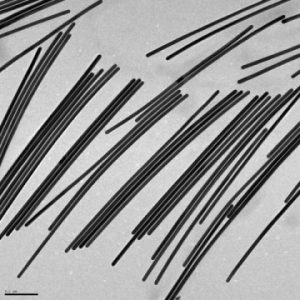Vitamin C offers countless benefits. It helps protect against immune system deficiencies, cardiovascular disease, can strengthen hair, and helps prevent wrinkles. Not to mention, it can also turn stubby gold nanorods into gold nanowires of impressive length.
According to ScienceDaily, scientists at Rice University recently discovered that all it takes is a dose of vitamin C to promote gold nanowires growth, making the wires valuable for sensing, diagnostic, imaging, and therapeutic applications.
According to Eugene Zubarev, a Rice lab chemist who worked on the study, and Bishnu Khanal, a Rice chemistry alumnus and lead author of the study, nanorods measured 25 nanometers thick at the start of the process, maintaining their widths as they grew in height. An important point, as the wires’ aspect ratio—length over width—dictates how well they absorb and emit light and how they conduct electrons.
Not only were the pair successful in making their particles go from the transition from nanorod to nanowire, but they can also grow the particles to theoretically unlimited lengths. Adding to the fact, the research team also proved the process to be reversible and fully controllable, making it possible to produce nanowires of any desired length.
“There’s no novelty per se in using vitamin C to make gold nanostructures because there are many previous examples,” said Zubarev. “But the slow and controlled reduction achieved by vitamin C is surprisingly suitable for this type of chemistry in producing extra-long nanowires. And the most valuable feature is that it is truly one-dimensional elongation of nanorods to nanowires.”
For more on nanotechnology, visit the ECS blog for the latest solid state, electrochemical, and technology news.


